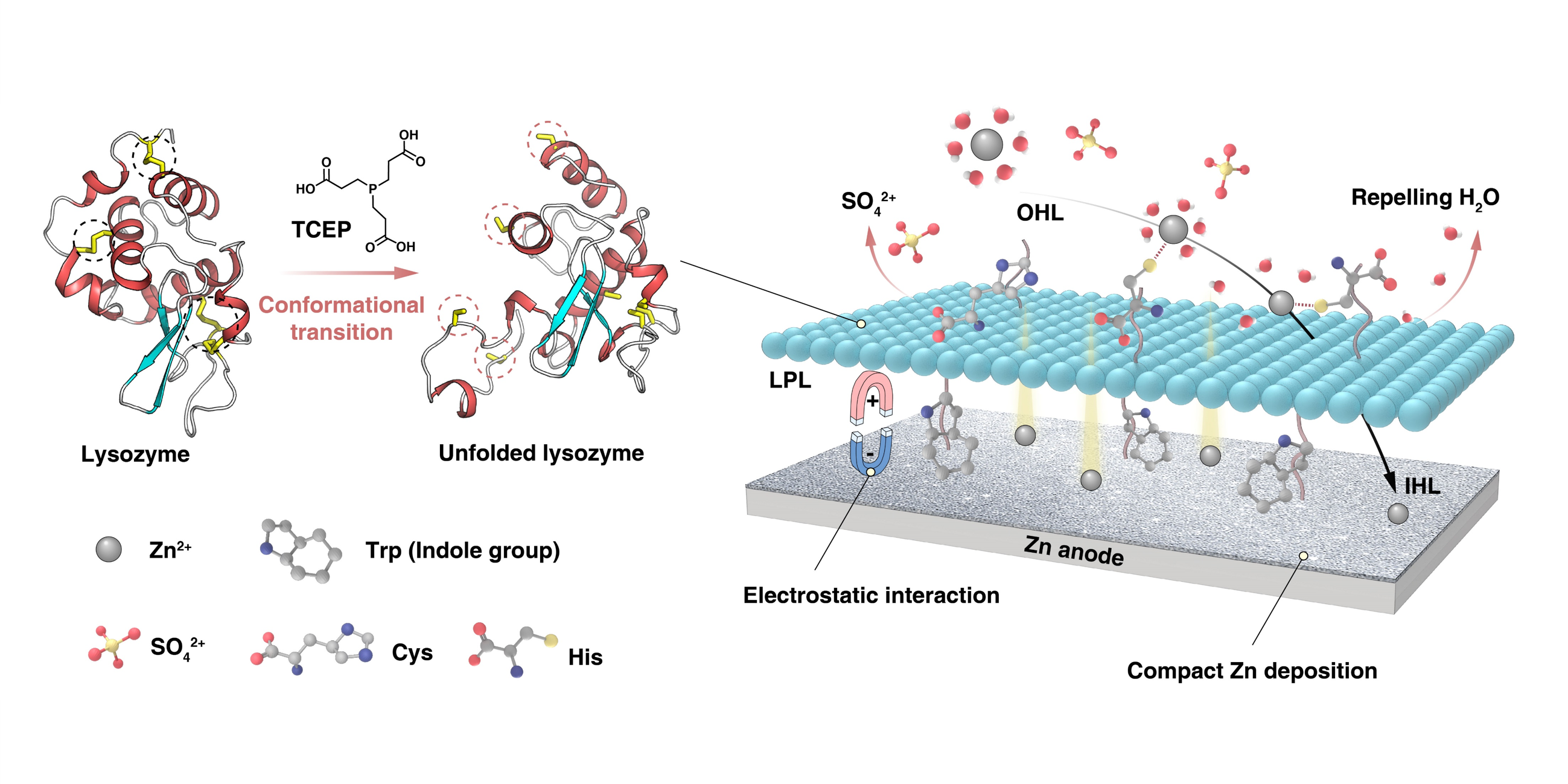Constructing Lysozyme Protective Layer via Conformational Transition for Aqueous Zn Batteries
Citation
Yifan Pan, Zhicheng Zuo, Yucong Jiao*, and Peiyi Wu*. Constructing Lysozyme Protective Layer via Conformational Transition for Aqueous Zn Batteries. Adv. Mater. 2024, 36, 2314144.
Abatract
The practical applications for aqueous Zn ion batteries are promising yet still impeded by the severe side reactions on Zn metal. Here, a lysozyme protective layer (LPL) is prepared on Zn metal surface by a simple and facile self-adsorption strategy. The lysozyme protective layer exhibits extremely strong adhesion on Zn metal to provide stable interface during long-term cycling. In addition, the self-adsorption strategy triggered by the hydrophobicity-induced aggregation effect endows the protective layer with a gap-free and compacted morphology which can reject free water for effective side reaction inhibition performance. More importantly, the lysozyme conformation is transformed from α-helix to β-sheet structure before layer formation, thus abundant functional groups are exposed to interact with Zn2+ for electrical double layer modification, desolvation energy decrease, and ion diffusion kinetics acceleration. Consequently, the LPL renders the symmetrical Zn battery with ultra-long cycling performance for more than 1200 h under high Zn depth of discharge (DOD) for 77.7%, and the Zn/Zn0.25V2O5 pouch cell with low N/P ratio of 2.1 at high Zn utilization of 48% for over 300 cycles. This study proposes a facile and low-cost method on constructing stable protective layer of Zn metal for high Zn utilization aqueous devices.


